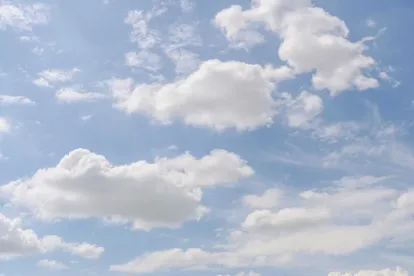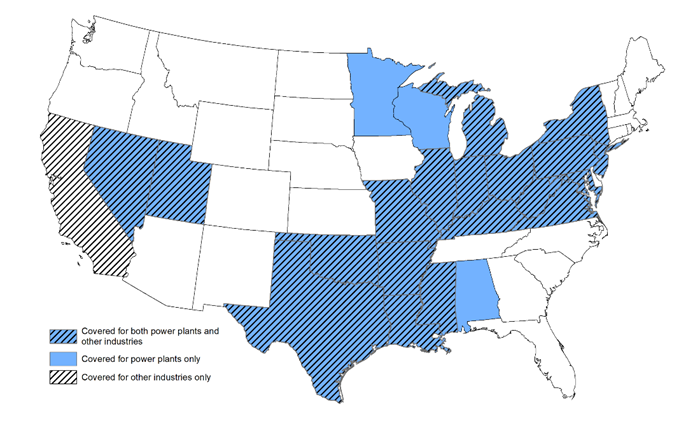Highlights
The EPA's final updated Good Neighbor Plan, effective in May 2023, aims to significantly reduce ozone-forming emissions of nitrogen oxides (NOx) from power plants and industrial facilities
While environmental and public health advocates strongly support the plan, some utilities and industries argue it is too restrictive and burdensome and exceeds EPA authority
Legal challenges to the final rule are anticipated, as the ongoing rift between upwind and downwind states persists and the political divide over regulatory authority intensifies
On March 15, 2023, the U.S. Environmental Protection Agency (EPA) issued its final updated Good Neighbor Plan. According to the agency, “the Plan will secure significant reductions in ozone-forming emissions of nitrogen oxides (NOx) from power plants and industrial facilities.” The EPA estimates that compliance with the Plan will “save thousands of lives and result in cleaner air and better health for millions of people living in downwind communities.”
The plan, which focuses on ensuring 23 states significantly reduce ozone-forming emissions, will become effective in May 2023, 60 days after publication in the Federal Register. The EPA will be conducting informational webinars offering an overview of the final rule and an opportunity for participants to ask questions.
Environmental and public health advocates have strongly supported these measures and applauded promulgation of the final rule that establishes the Good Neighbor Plan. Some advocates in New Jersey and Wisconsin led earlier successful legal efforts that required the EPA to hold upwind states accountable for smog pollution that affects downwind states.
Some utilities have opposed the rule as too restrictive and burdensome saying it will have a negative impact on the reliability of power grids nationwide. The coal-fired plant industry has been particularly vocal in response to the EPA’s regulatory impact analysis (RIA), which projects the final rule will result in coal retirements that will reduce national coal capacity by 13 percent. Some states also opposed the plan, asserting in comments that the plan exceeds EPA authority, the data upon which it is based is inaccurate and unreliable, and the control technologies required are technically infeasible. Notwithstanding a strong push in recent months by some of the newly covered industrial sectors, none could persuade the agency to exclude them from the rule.
Based on initial public reactions, it is likely the final rule will be challenged in the courts. All indications are that the new rule will do nothing to ameliorate the ongoing rift between upwind states that the EPA identifies as ozone polluters and downwind neighbors subjected to that pollution. Additionally, it appears that the approved plan will exacerbate the growing political divide over the Biden administration’s authority to regulate generally and, more specifically, the extent of the EPA’s authority to control emissions. Claims of overreach are expected from conservatives and Republican-led states, some of which had previously challenged the EPA’s decisions rejecting their proposed individual plans to control interstate smog. There is little doubt that one or more of the new industries that were assigned emissions limitations under the Good Neighbor provisions for the first time will contest the application of the plan to them.
Good Neighbor Plan Basics
In its fact sheet for the final Good Neighbor Plan, the EPA explains:
“The Clean Air Act requires states to submit a State Implementation Plan (SIP) that provides for the implementation, maintenance, and enforcement of each primary or secondary NAAQS. Each state must make this new SIP submission within 3 years after promulgation of a new or revised NAAQS. A key Clean Air Act requirement for these SIPs, known as the “Good Neighbor” provision, is that they ensure that sources within the state do not contribute significantly to nonattainment or interfere with maintenance of any NAAQS in other states.
Where EPA finds that a state has not submitted a Good Neighbor SIP, or if the EPA disapproves the SIP submission, within two years, the EPA must issue a Federal Implementation Plan (FIP) to assure downwind states are protected.”
Since the current Good Neighbor rule was proposed in March 2022, the EPA has “updated its air quality modeling based on stakeholder input providing improved emissions data and recommendations to improve model performance.” The agency applied its established four-step interstate transport framework to this updated information to define the good neighbor obligations for the 2015 Ozone National Ambient Air Quality Standards (NAAQS). Based on this analysis, the agency determined that interstate transport of ozone precursor emissions from 23 upwind states is significantly contributing to nonattainment or interfering with maintenance of the 2015 ozone NAAQS in downwind states. (The EPA uses the term downwind to describe those states or areas where a receptor is located, and the term upwind to describe states whose emissions are linked to one or more of those receptors.)
The final Good Neighbor Plan provides that these 23 states must achieve additional reductions in NOx pollution to fully resolve their outstanding Good Neighbor obligations for the 2015 ozone NAAQS (i.e., the EPA’s health-based air quality standard for smog). The EPA’s webpage for the final Good Neighbor Plan includes the following figure depicting the states covered under the power plants and other industries portions of the final rule:
Source: https://www.epa.gov/csapr/good-neighbor-plan-2015-ozone-naaqs
The goal of the final Good Neighbor Plan is to reduce emissions in these states as expeditiously as possible. The final rule includes a combination of approaches to reduce ozone pollution.
NOX Allowance Trading Program for Fossil Fuel-Fired Power Plants in 22 States
Starting with this year’s ozone season, power plants in 22 states will be included in a revised and strengthened Cross-State Air Pollution Rule ozone season Group 3 trading program. Initial control stringencies will be based on the reductions achievable through immediately available measures (i.e., operation of existing emissions controls consistently). Thereafter, emissions budgets will be phased in based on the level of reductions achievable through phased installation of state-of-the-art emissions controls at power plants starting in 2024. Nationally, the EPA wants a 50 percent reduction in NOx emissions from power plants by 2027.
In response to power sector concerns, the final rule included a number of changes to address grid reliability. These are summarized by the EPA in The Good Neighbor Plan and Reliable Electricity, which was released with the rule. The rule also includes additional features that “promote consistent operation of emissions controls to enhance public health and environmental protection for the affected downwind regions,” according to the EPA’s press release.
At the time the final rule was issued, the agency also provided a summary of the important implementation dates in 2023 and 2024 for reductions of NOX emissions from power plants.
NOX Emissions Standards for Large Industries in 20 States
In its press release, the EPA stated it had determined the following industries in 20 states that have significant impacts on downwind air quality also have the ability to install cost-effective pollution controls:
-
Reciprocating internal combustion engines in pipeline transportation of natural gas
-
Kilns in cement and cement product manufacturing
-
Reheat furnaces in iron and steel mills and ferroalloy manufacturing
-
Furnaces in glass and glass product manufacturing
-
Boilers in iron and steel mills and ferroalloy manufacturing, metal ore mining, basic chemical manufacturing, petroleum and coal products manufacturing, and pulp, paper, and paperboard mills
-
Combustors and incinerators in solid waste combustors or incinerators
Beginning in the 2026 ozone season, new enforceable NOx emissions control requirements will apply to existing and new emissions sources in these industries. The EPA may allow eligible individual facilities a one year compliance extension; and the agency may grant additional compliance extensions of up to two more years. The agency is particularly sensitive to potential supply chain delays.
The EPA has estimated that the final Good Neighbor Plan will reduce ozone forming NOx emissions from the 23 significantly contributing upwind states by approximately 70,000 tons during the 2026 ozone season (May 1-Sept. 30). 25,000 tons of NOx emissions reductions will come from fossil fuel-fired power plants, and 45,000 tons would come from the other covered industrial sources.
The agency further estimates that the cost of achieving these reductions will be approximately $910 million annually over the period 2023 to 2042. The EPA determined that these costs will be just a fraction of the estimated net value of economic benefits, which could exceed $10 billion yearly over the same 20 years.
The EPA also specifically assessed compliance with Executive Order 12898 (59 FR 7629, February 16, 1994), which directs federal agencies, to the greatest extent practicable and permitted by law, to make environmental justice part of their mission. The EPA stated that it “believes that the human health or environmental conditions that exist prior to this action result in or have the potential to result in disproportionate and adverse human health or environmental effects on people of color, low-income populations and/or Indigenous peoples.” The agency went on to explain its further belief that this action is not likely to change those existing disproportionate and adverse effects:
“Specifically, we do not find evidence that potential EJ concerns related to ozone or PM2.5 exposures will be meaningfully exacerbated or mitigated in the regulatory alternatives under consideration as compared to the baseline. We infer that baseline disparities in the ozone and PM2.5 concentration burdens are likely to persist after implementation of the regulatory action or alternatives under consideration, due to similar modeled concentration reductions across population demographics. Importantly, the action described in this rule is expected to lower ozone and PM2.5 in many areas, including in ozone nonattainment areas, and thus mitigate some pre-existing health risks across all populations evaluated.”
Takeaways
The EPA's final updated Good Neighbor Plan aims to significantly reduce ozone-forming emissions and improve public health for millions of people living in downwind communities. The final rule has sparked a mixture of reactions from different parties. While environmental and public health advocates celebrate the rule for its potential to save lives and improve air quality, utilities and industries, particularly coal-fired plants, argue that it is too restrictive, burdensome and technically infeasible.
Legal challenges are likely given the ongoing tensions between upwind and downwind states, political divisions over the federal government's authority to regulate emissions, and adverse reaction by industries that are subject to the Good Neighbor Plan for the first time. The final rule's effect on both the environment and affected industries will be closely watched as the battle over regulatory authority and environmental protection continues to unfold.




 />i
/>i

